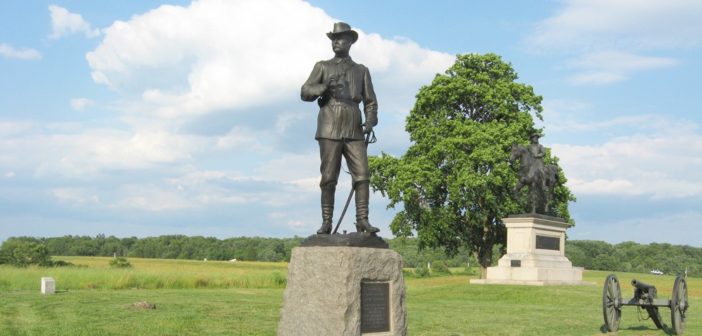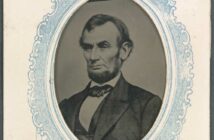The three-day battle at Gettysburg is of considerable and continued interest to the thousands of visitors who come to the battlefield each year to walk the hallowed ground and hear the stories about the battle participants.
While much of that interest is focused on the better-known incidents and terrain features of the battle’s second and third day, scant attention is usually paid to the fighting of July 1, the first day of the battle. Yet it was the fighting on the first day that determined the ultimate flow of the battle and the eventual Union victory and Confederate defeat. The fighting on the first day was in the form of a meeting engagement, the unplanned collision of small portions of two contending armies.
On June 30, 2,500 Union cavalrymen, commanded by Brig. Gen. John Buford, occupied McPherson’s Ridge and Oak Ridge, a mile west and north of the town respectively.
Also on June 30, 2,300 Confederate infantrymen advanced eastward from South Mountain astride the Chambersburg Turnpike toward Gettysburg, searching for supplies. Upon seeing the Union cavalry on McPherson’s Ridge, the Confederate force stopped its advance and then marched back toward South Mountain. Although there was no combat that day, both sides had identified their opponent as being present in the area, and the stage was set for the fighting which would begin the next day.
Early in the morning of Wednesday, July 1, part of Gen. Henry Heth’s Confederate infantry division advanced toward Gettysburg from the area of South Mountain. Crossing Belmont Ridge and then Herr Ridge, their advance was opposed by the now dismounted Union cavalry positioned astride McPherson’s Ridge. By mid-morning, Union infantry arrived, relieved the Union cavalry in place and continued the fighting against two advancing Confederate infantry brigades.
Late in the morning, a lull spread across the battlefield as the fighting slowed then stopped, allowing both sides to reorganize and bring fresh forces into position. At mid-afternoon, the fighting resumed with newly arrived Confederate units advancing north to south across Mummasburg Road from Oak Ridge, concurrent with the resumption of Confederate advances easterly from Herr Ridge toward McPherson’s Ridge and Seminary Ridge.
Later in the afternoon, additional Confederate infantry attacked the line of Union units deployed north of town. This final Confederate onslaught was enough to force Union units back through the town in disarray. In a combination of orderly withdrawals and outright flight, the Union units ultimately fell back to their reserve position on Cemetery Hill, south of the town, while the Confederates occupied the town itself.
On the surface, the first day of battle was a Confederate victory. They had forced the Union troops to retreat from their initial positions west and north of the town. Yet, at the end of the day, the Union forces retained possession of Cemetery Hill, the key terrain to any battle fought in the area. Overnight, the Union position was improved still further as newly arrived forces began occupation of Cemetery Ridge and Culp’s Hill.
That evening, the soldiers from both sides rested as best they could knowing that the fighting would soon continue. Meanwhile, their officers worked at reconstituting their battered units and making battle plans for the fighting which continued for the next two days.




